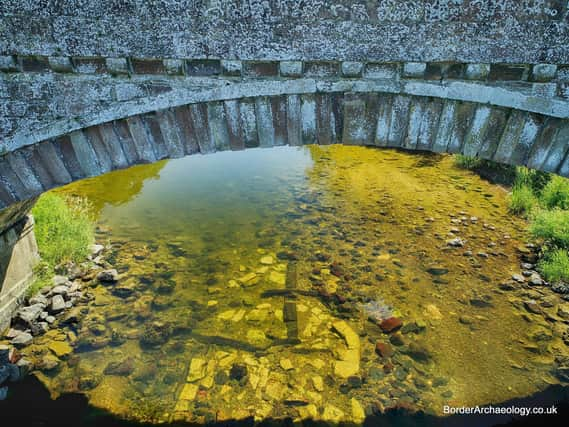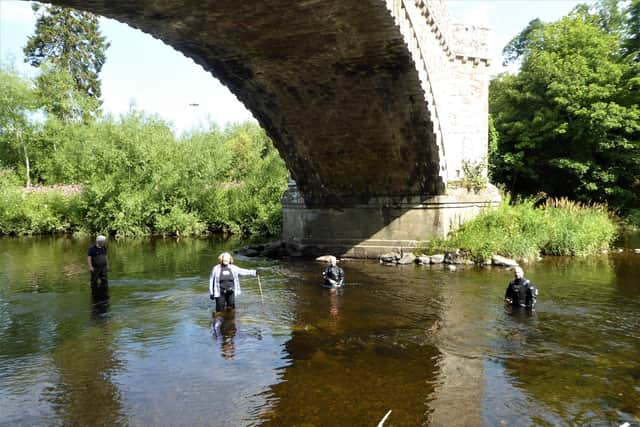Lost medieval bridge that transported kings and queens re-emerges


Remains of the Ancrum Old Bridge, which stood during the 14th Century, has been found in the River Teviot after being hidden underwater for hundreds of years.
Dating of the oak bridge timbers has confirmed a date of the mid-1300s, making the remains the oldest scientifically dated bridge ever found in its original position across one of Scotland’s rivers.
Advertisement
Hide AdAdvertisement
Hide AdIt is now known that the bridge stood for more than 400 years and had a key strategic importace during the Medieval period.


Built during the reigns of David II of Scotland and Edward III of England, the bridge formed part of the ‘Via Regia’ – or The Kings Way – from Edinburgh to Jedburgh and the Borders.
James V would have crossed here in 1526, as would Mary Queen of Scots returning from her tour of the Borders in 1566, and the Marquis of Montrose on his way to battle at Philiphaugh in 1645.
Kevin Grant, archaeology manager at Historic Environment Scotland, described the find as ‘one of the most exciting and significant archaeological discoveries in Scotland in recent years”.
It was found after HES worked with Ancrum and District Heritage Society (ADHS), a volunteer archaeology group, Dendrochronicle – a firm which specialises in the dating of tree rings – and Wessex Archaeology.
Mr Grant added: "This project shows that discoveries of immense importance remain to be found by local heritage groups –- and what can be achieved by bringing archaeological science and expertise together with local knowledge which has helped to unlock a centuries-held secret that will add to the fabric of Scotland’s story.”
Geoff Parkhouse from ADHS said: “Ancrum Old Bridge now has a 14th Century date. In Scotland there is not a standing bridge that is earlier than the 15th Century.
“In those times, during flood or highwater, the Ancrum Bridge may have been the only place to cross the Teviot between Hawick and Berwick, making it one of the most important structures in medieval Scotland.”
Advertisement
Hide AdAdvertisement
Hide AdInitial archive research by ADHS led to the discovery of cutwater platforms and oak timbers that once supported the piers of a multi-arched bridge, hidden under the waters of the River Teviot. These are the last remaining, but crucially also the first built, parts of the bridge.
Working with HES and combining archive research with radiocarbon dating, the volunteers were able to confirm that the bridge stood for over 400 years.
Dr Coralie Mills of Dendrochronicle worked with the group to take samples of the timbers from the riverbed.
She was able to identify them as native oak, which is rarely found in Scottish sites after around 1450 when imported timber becomes more frequent.
Underwater Archaeologists from Wessex Archaeology undertook a survey and assessment of the remains. Timber samples carefully removed from the riverbed were then sent to the Scottish Universities Environment Research Centre, in East Kilbride, for radiocarbon dating with a date range of the mid-1300s returned.